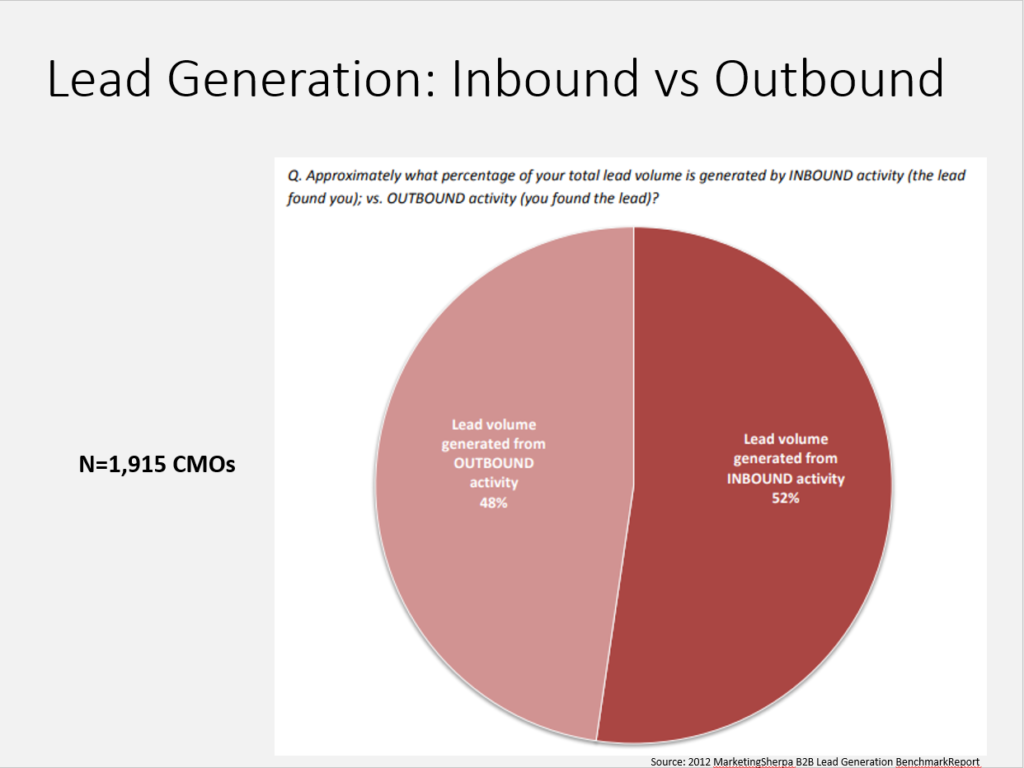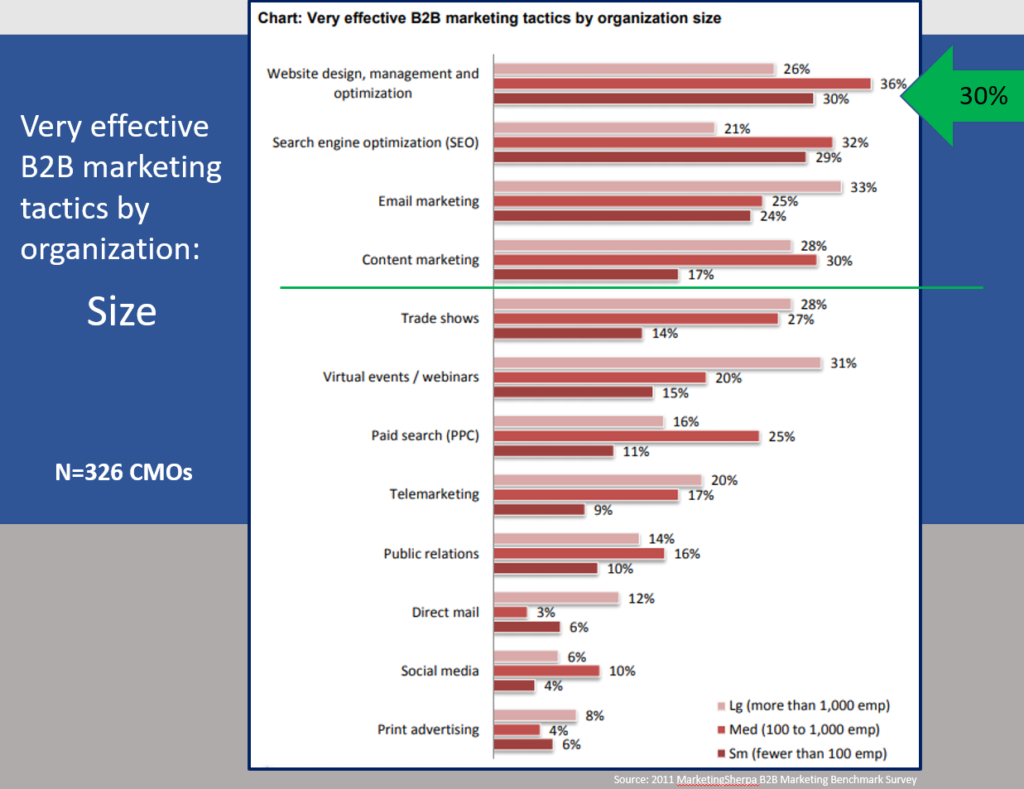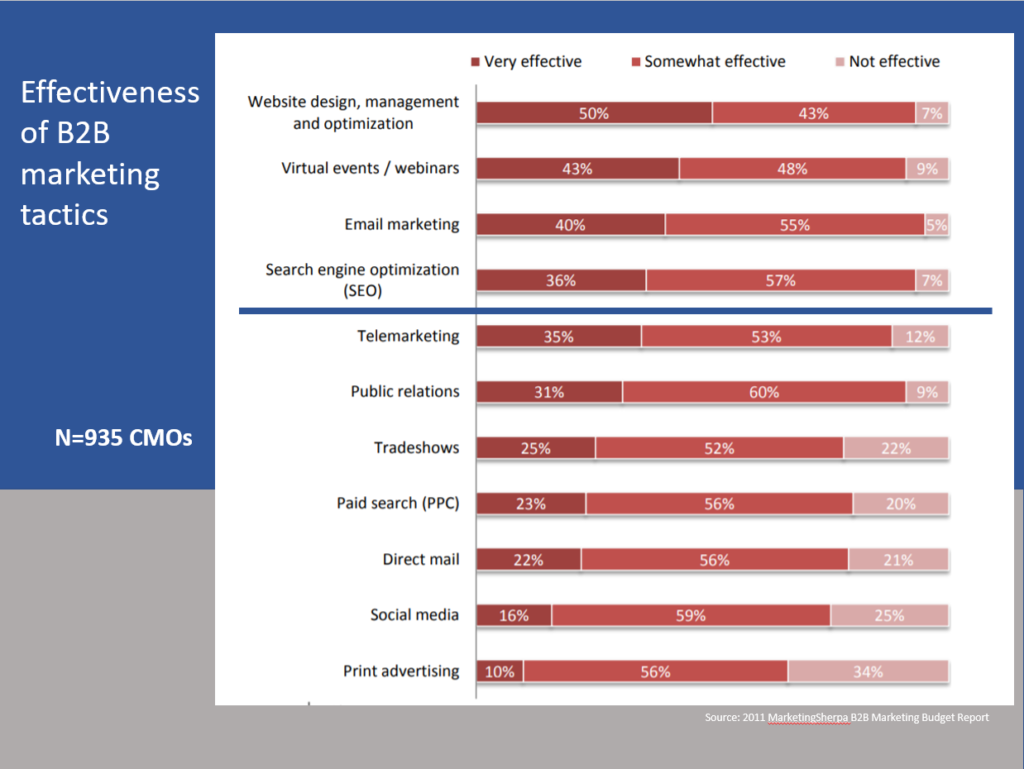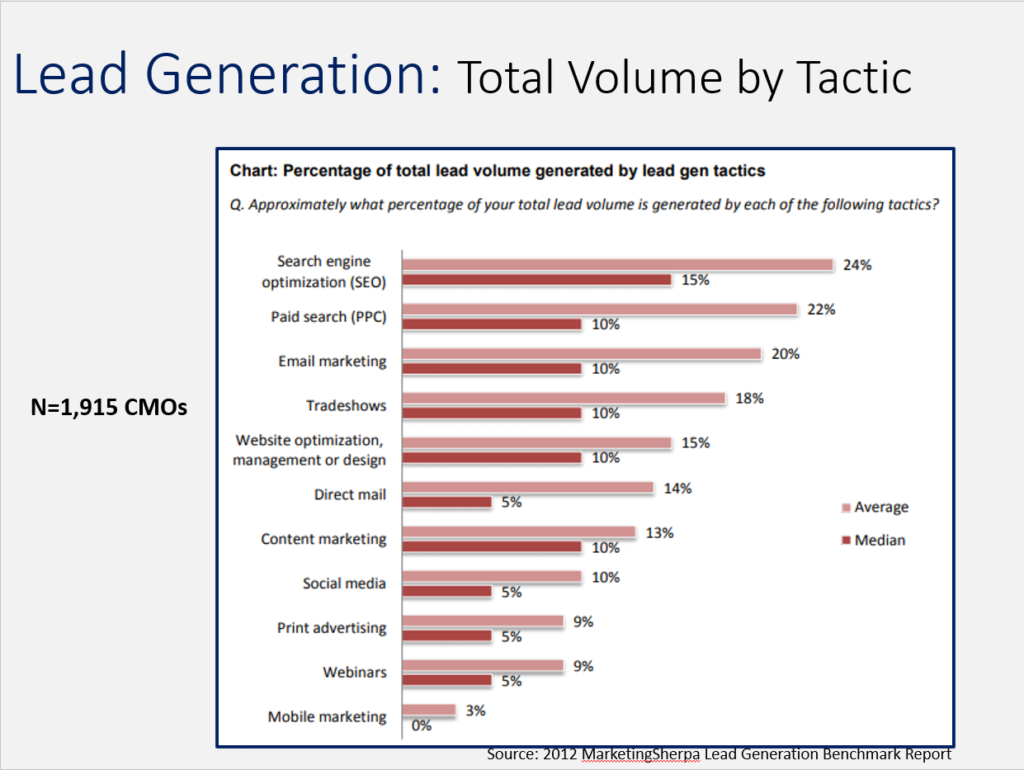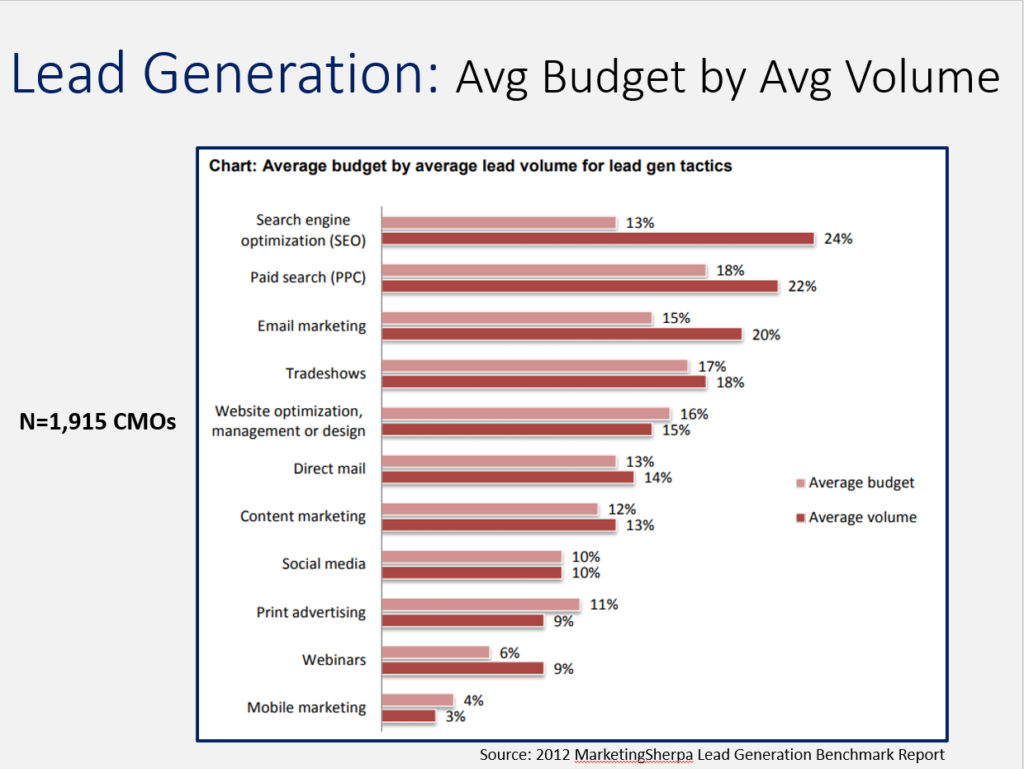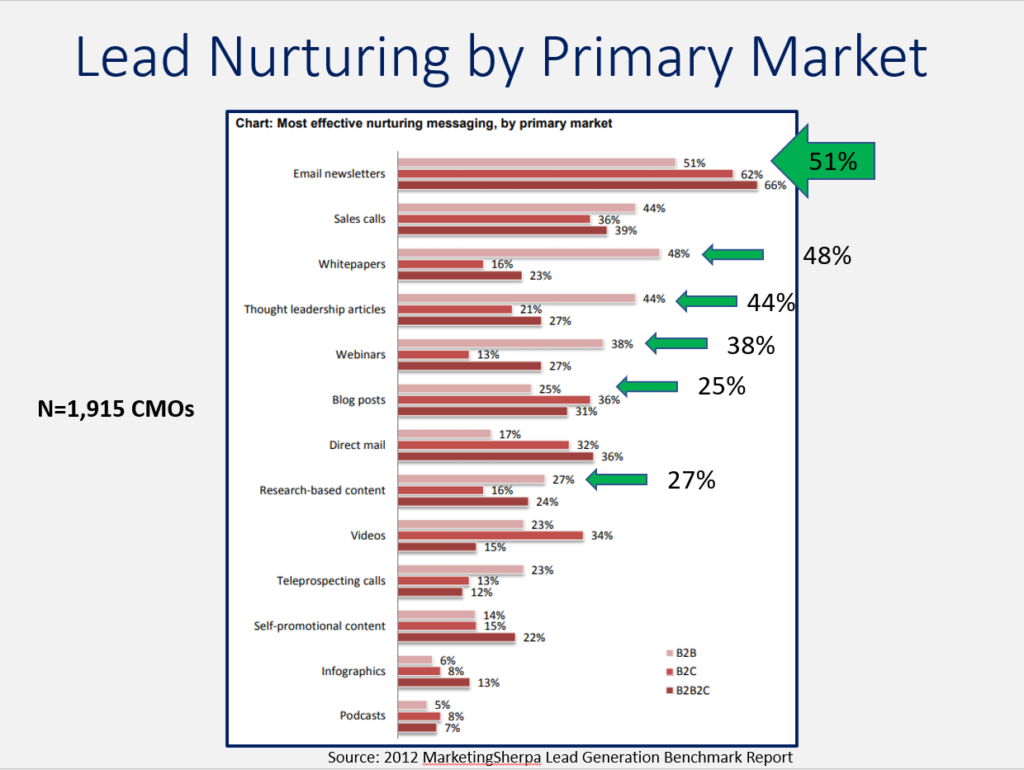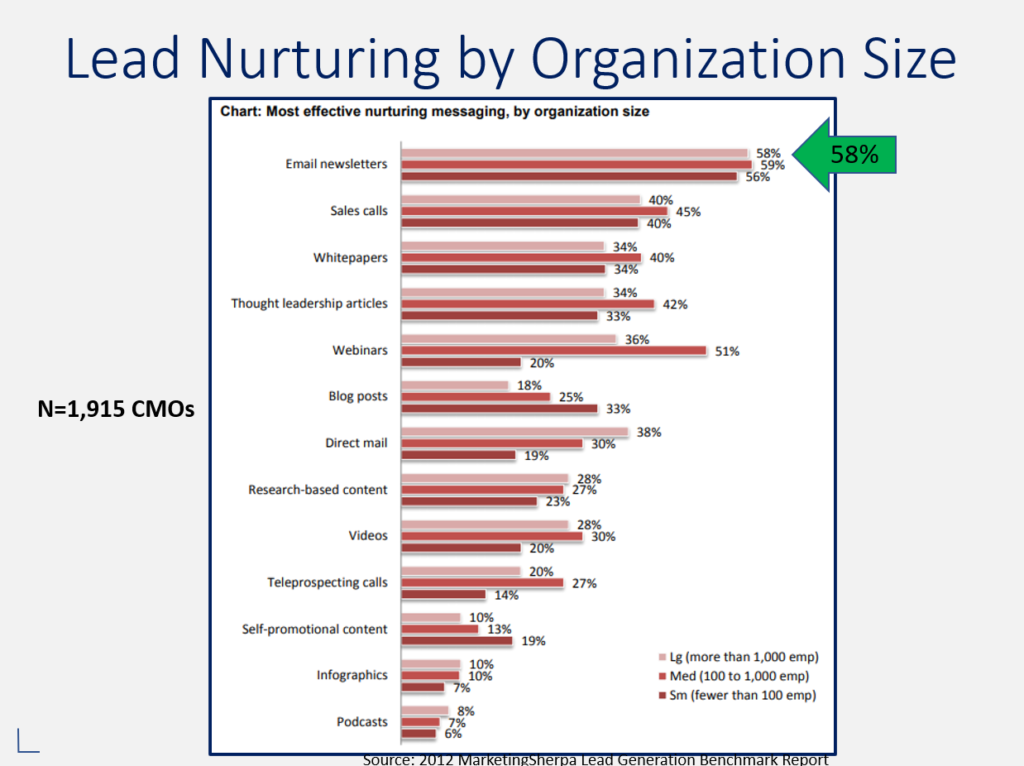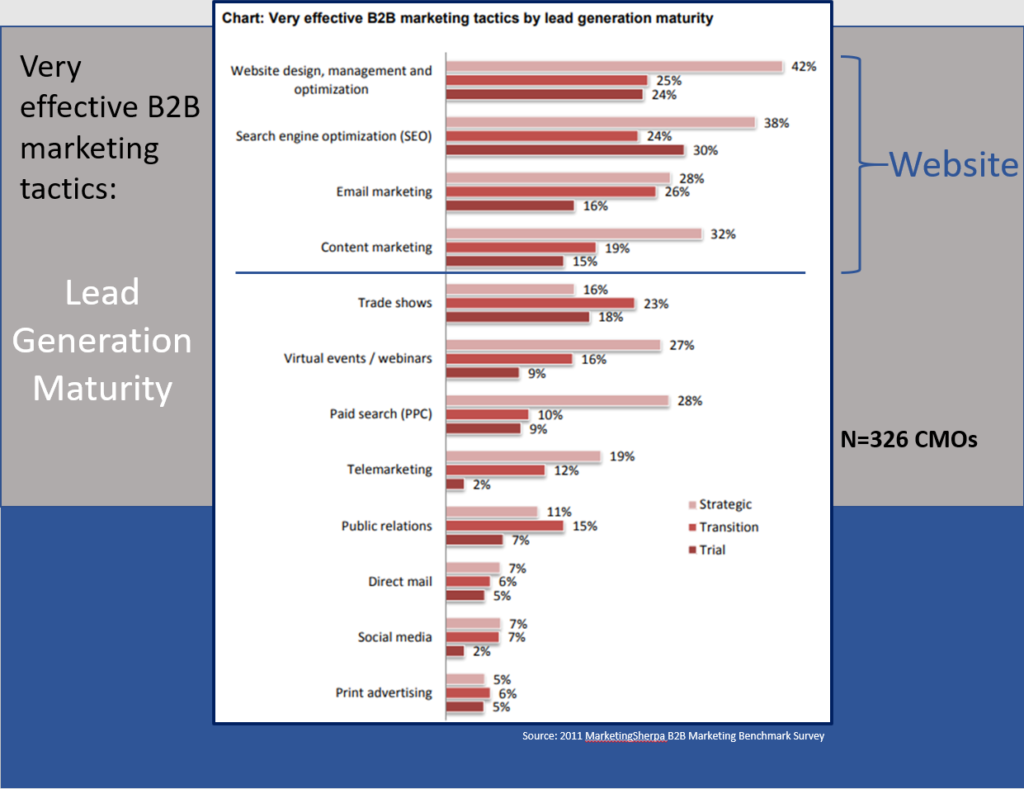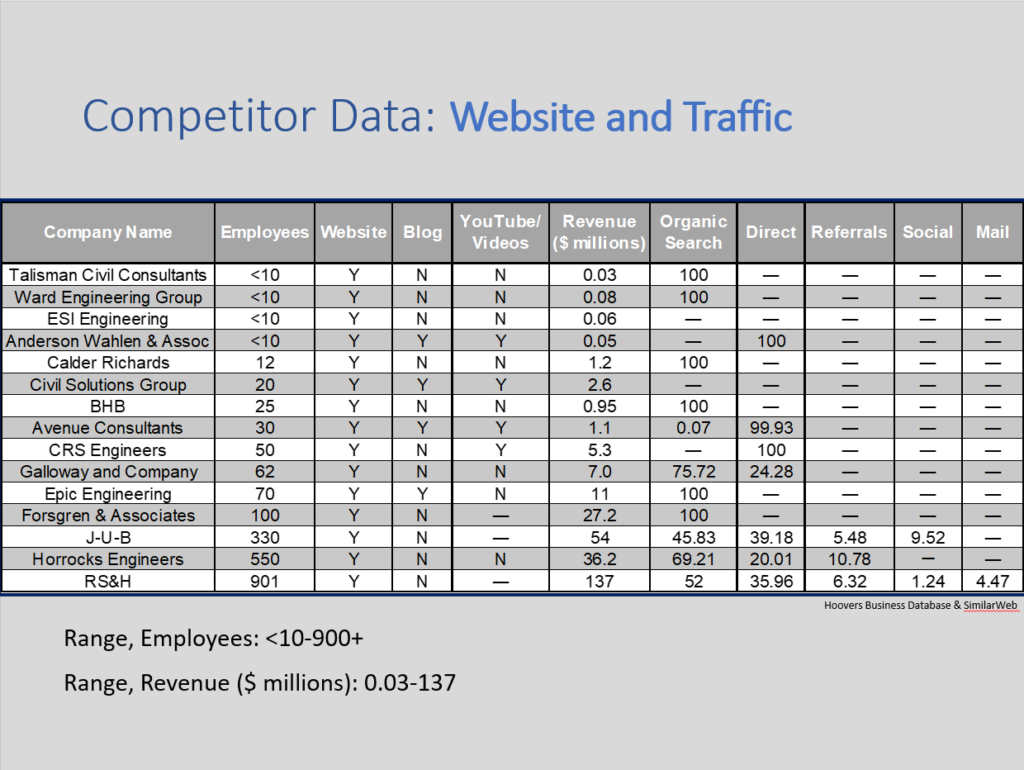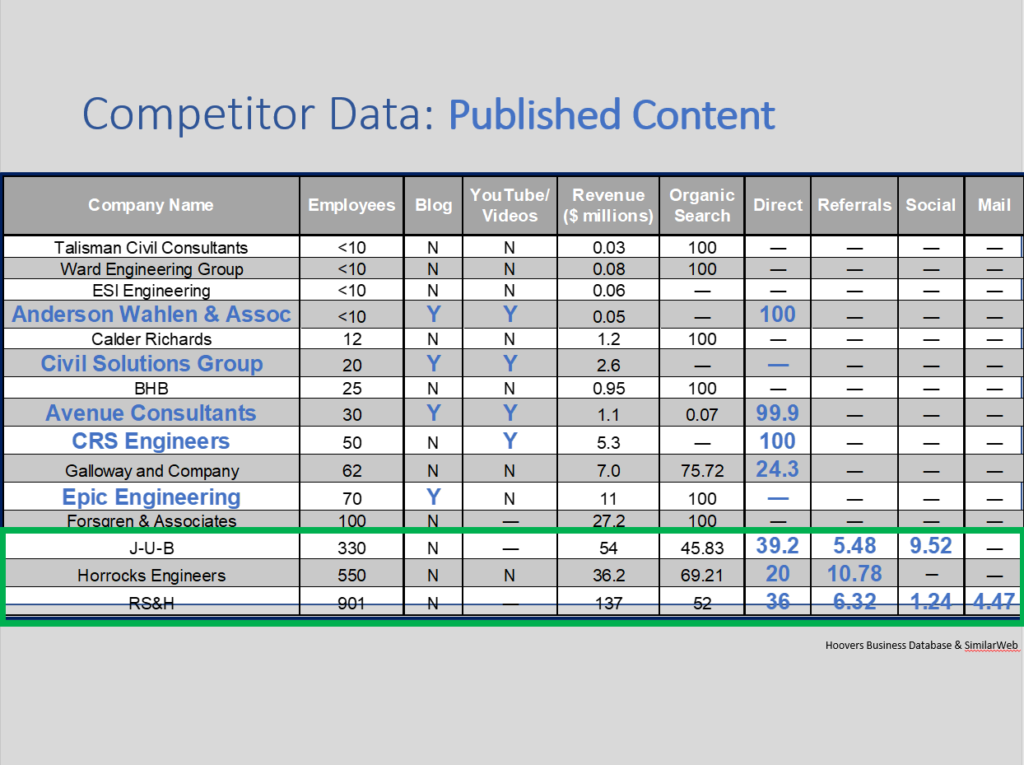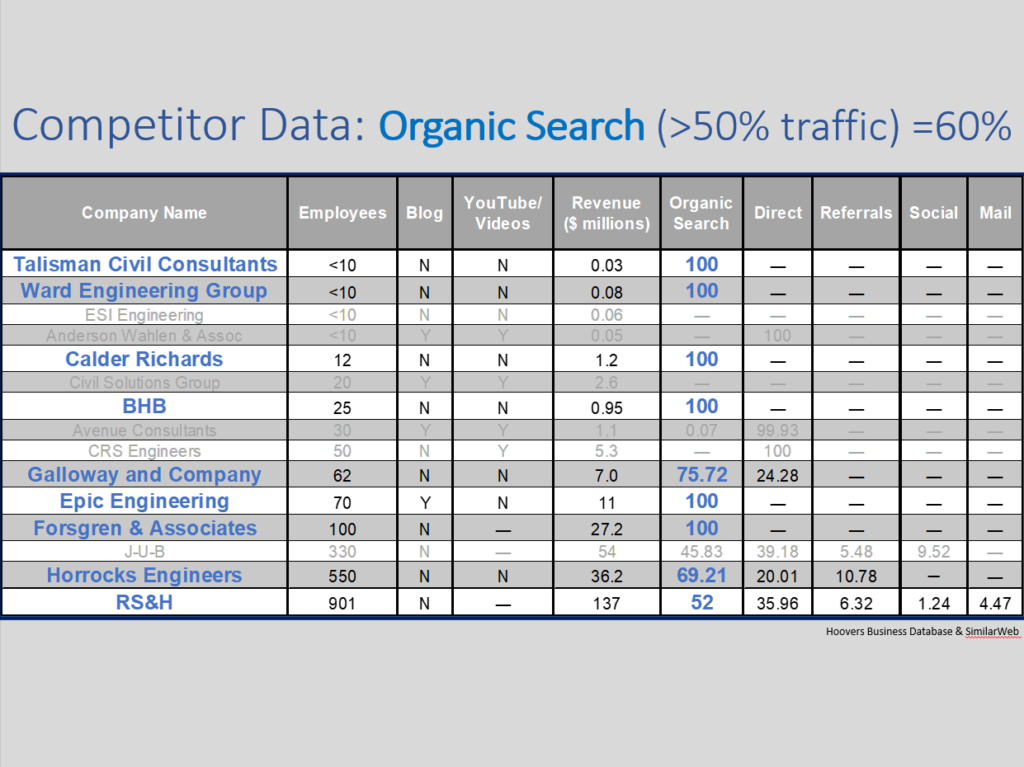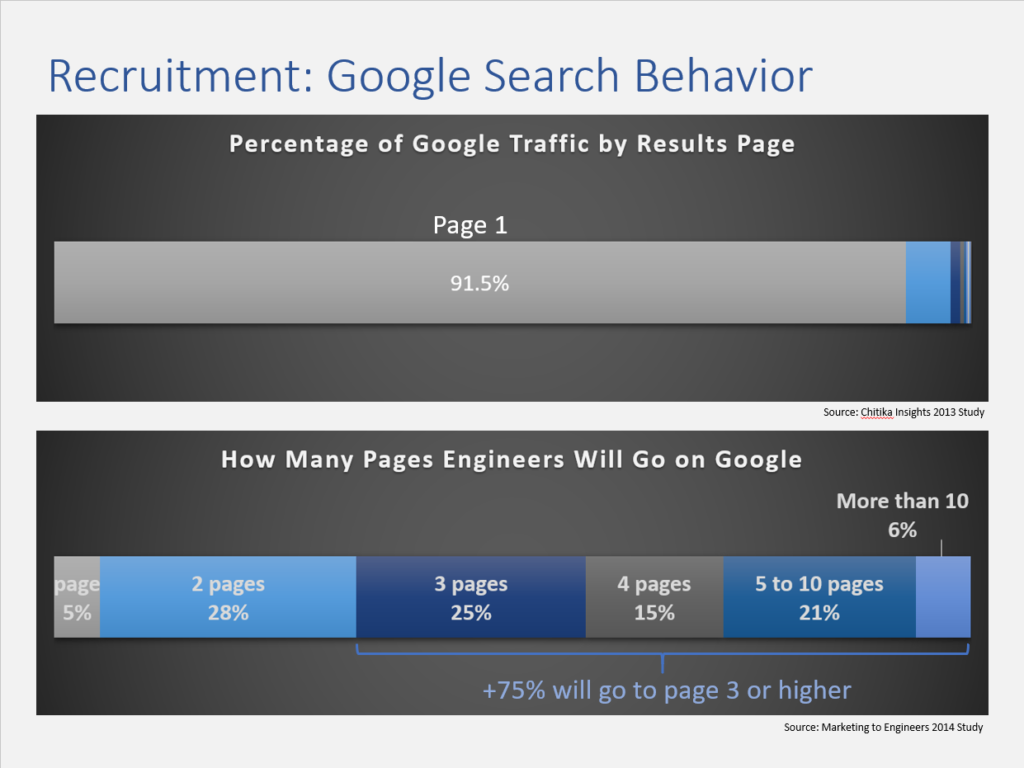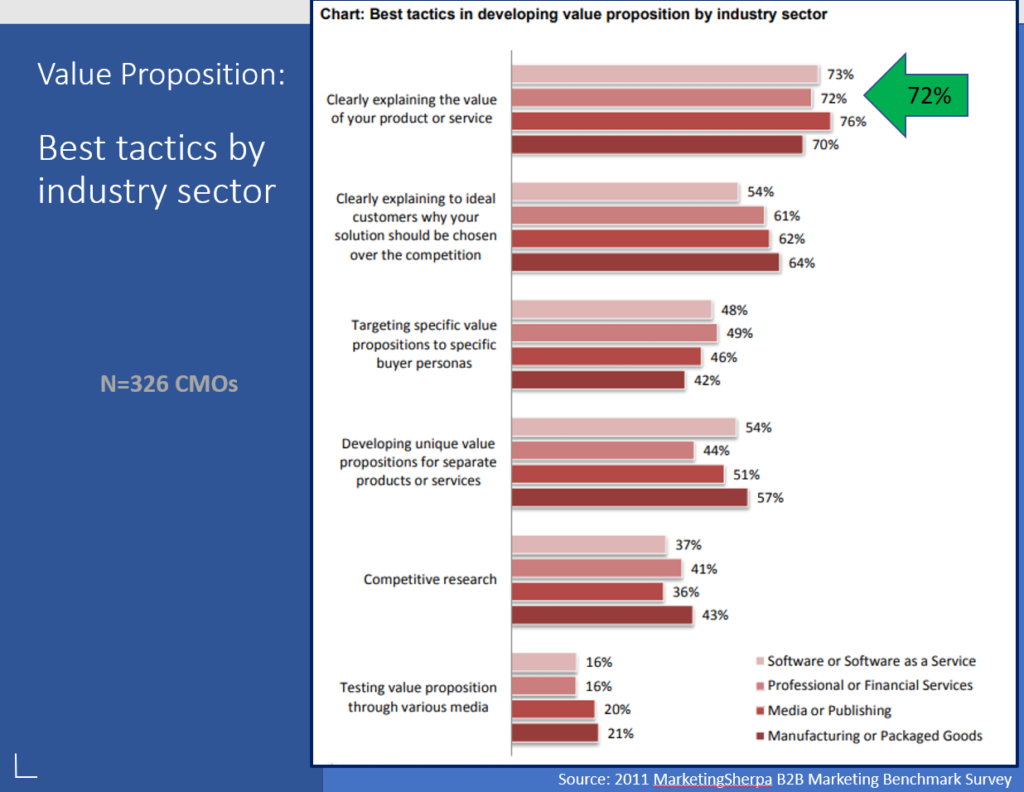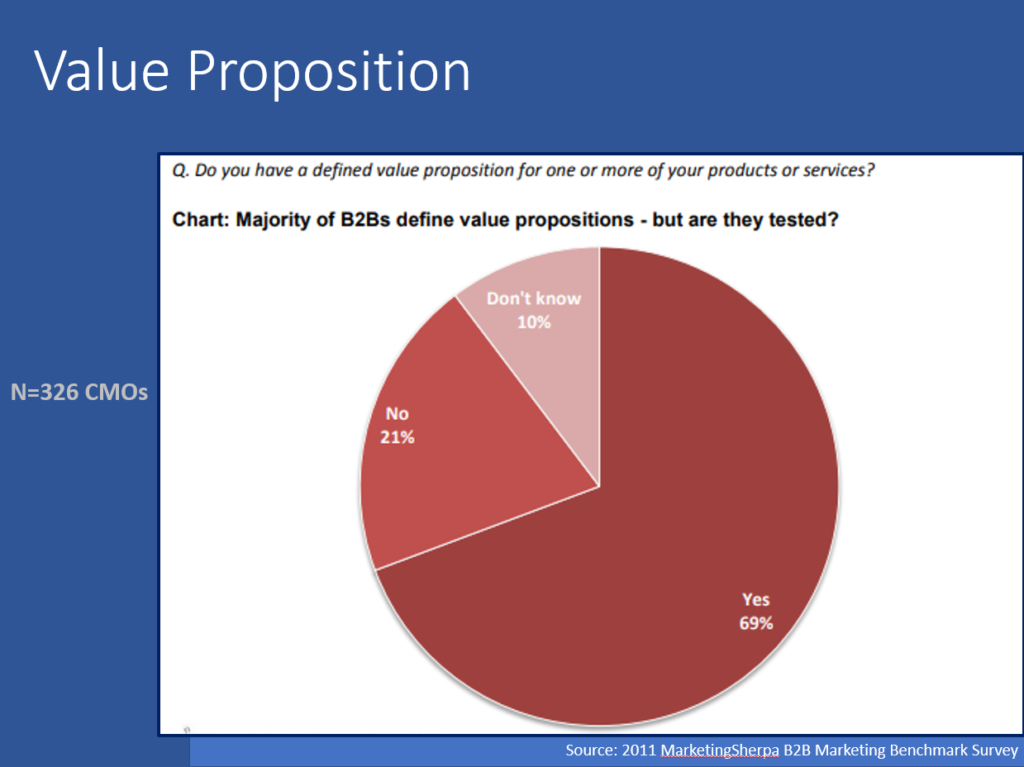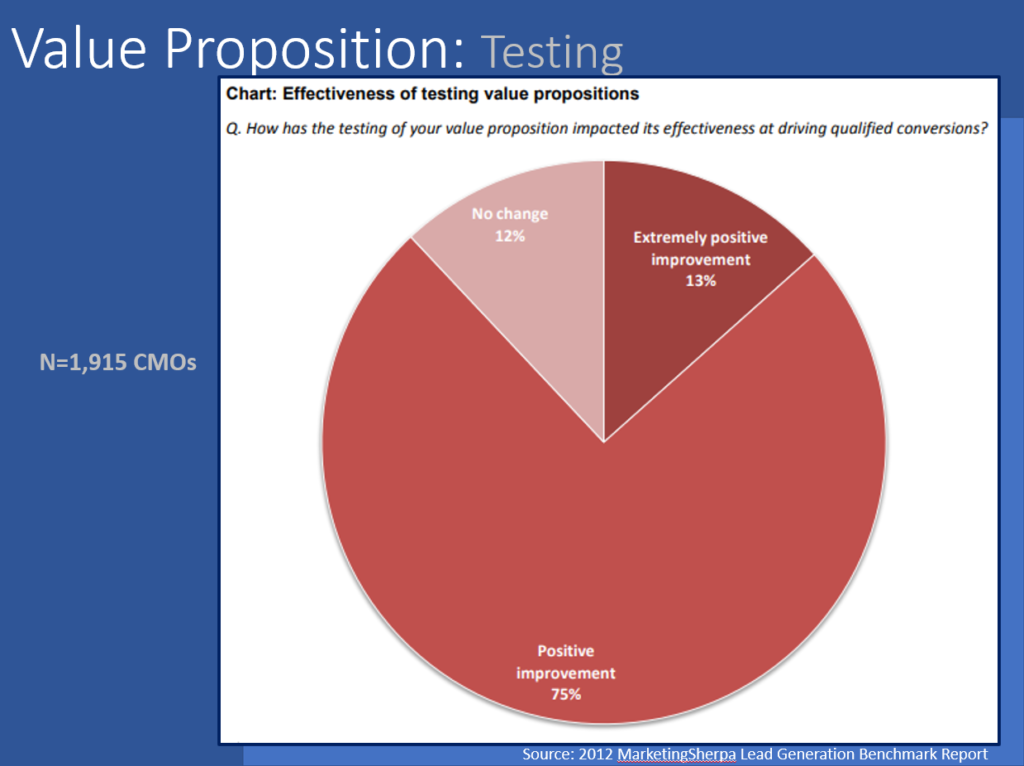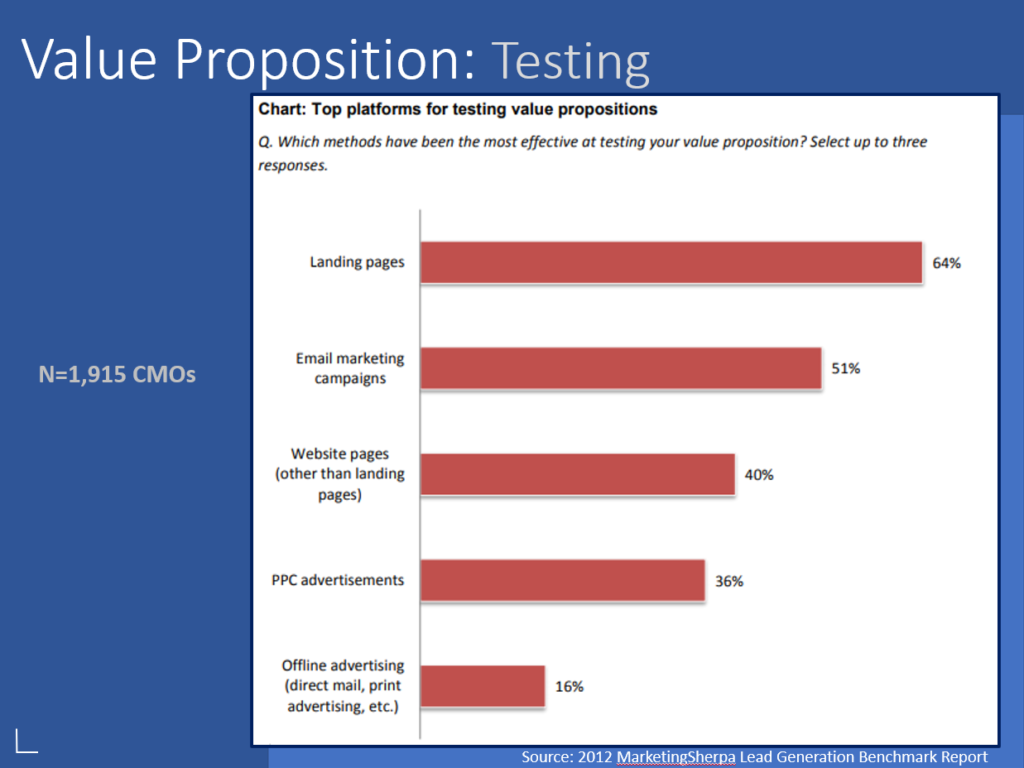Civil Science
Civil Science
B2G Engineering and Design
CLIENT
ROLE
Research, Strategy
Mission
Draft a board-level proposal for funding the company's first marketing program focused on attracting talent, and increasing leads and positive perception of the company that will create the most impact in the shortest period of time.
(Unreleased due to COVID-19)
(Unreleased due to COVID-19)
Background
Civil Science is a civil engineering consulting firm that provides services to public sector and private clientele. The majority of its contracts and revenue come from federal, state, and city transportation projects. The company operates out of eight offices in five states, with 70 employees.
Analysis
Since its founding in 2011, the company has had no marketing program. Marketing efforts are supplemental to proposal writing, focusing on immediacy without regard to long-term strategy with marketing processes and printed materials produced ad hoc for each bid. The website, the company's single marketing asset, is used exclusively as a recruitment tool. Additionally, no data for proposal wins/losses are collected. Because of this, the company lacks the capability to track, measure, or test what works. The highest revenue is generated in Utah where the company is headquartered and maintains two offices. Opinions regarding the efficacy of marketing vary among the company's board members, three-fifths of whom are engineers. The company has no CO's.
Competition
Concentration of civil engineering services in the US is low, with many small companies confining operations to a regional market, or specialized niches. Firm sizes range from fewer than ten employees to many tens of thousands. Competition is high and overwhelmingly price-based, exclusively so for government contracts. Small companies are at a further disadvantage as larger companies in the market acquire small and medium firms and larger European firms enter the market.
Marketing and visibility in the industry is exclusively online. Civil engineers tend to loathe marketing or at best, see it as a necessary evil. While most engineering firms have websites regardless of size, medium and large-sized firms are more likely to recognize and take advantage of a website's marketing value including: positioning, establishing authority in the industry, inbound marketing, collecting and measuring data, and nurturing leads, all of which have been shown to produce effective results (Exhibits A-H). All of Civil Science's main competitors have websites with these features (Tables 1-3). Civil Science does not. Though a website is the most important marketing investment a company can make, the Civil Science website is nothing more than a job board. Furthermore, competitors with these capabilities are able to operate at scale, compounding their advantage over time compared to companies that do not.
Relationships and Reputation
With little differentiation in the industry, the reputation of firms and their relationships within the market are important factors of competition. Most job leads and wins are due to existing relationships and new client leads rely heavily on reputation, particularly when penetrating new regions and markets. Reputation is also a significant factor for attracting talent for recruitment. Job seekers naturally search for employment with a firm that has a favorable reputation and engineers tend to search in more depth on the internet than the majority of the public (Exhibit I). Such firms, more often than not, take care to present themselves from a branding perspective, adding value to the job seeker's search to stoke interest in the company.
Blogging on industry topics is effective for establishing the perceived authority of a firm and contributes to the positive perception of the firm for both new leads and employee recruitment. All of Civil Science's main competitors include published content on their websites and may publish email newsletters. Civil Science does not.
Competitors also demonstrate clear positioning, communicating specialization with differentiated messaging to stick out in the market, and a clear value proposition, both of which likely increase qualified leads (Exhibits J-M), and are absent from Civil Science's website. With the attention given to the quality of their sites toward an audience, it can be reasonably inferred these direct competitors likely utilize CRM tools for data analytics, lead nurturing and recruitment, giving them an edge in maintaining and developing relationships with new and existing clients.
Competition
Concentration of civil engineering services in the US is low, with many small companies confining operations to a regional market, or specialized niches. Firm sizes range from fewer than ten employees to many tens of thousands. Competition is high and overwhelmingly price-based, exclusively so for government contracts. Small companies are at a further disadvantage as larger companies in the market acquire small and medium firms and larger European firms enter the market.
Marketing and visibility in the industry is exclusively online. Civil engineers tend to loathe marketing or at best, see it as a necessary evil. While most engineering firms have websites regardless of size, medium and large-sized firms are more likely to recognize and take advantage of a website's marketing value including: positioning, establishing authority in the industry, inbound marketing, collecting and measuring data, and nurturing leads, all of which have been shown to produce effective results (Exhibits A-H). All of Civil Science's main competitors have websites with these features (Tables 1-3). Civil Science does not. Though a website is the most important marketing investment a company can make, the Civil Science website is nothing more than a job board. Furthermore, competitors with these capabilities are able to operate at scale, compounding their advantage over time compared to companies that do not.
Relationships and Reputation
With little differentiation in the industry, the reputation of firms and their relationships within the market are important factors of competition. Most job leads and wins are due to existing relationships and new client leads rely heavily on reputation, particularly when penetrating new regions and markets. Reputation is also a significant factor for attracting talent for recruitment. Job seekers naturally search for employment with a firm that has a favorable reputation and engineers tend to search in more depth on the internet than the majority of the public (Exhibit I). Such firms, more often than not, take care to present themselves from a branding perspective, adding value to the job seeker's search to stoke interest in the company.
Blogging on industry topics is effective for establishing the perceived authority of a firm and contributes to the positive perception of the firm for both new leads and employee recruitment. All of Civil Science's main competitors include published content on their websites and may publish email newsletters. Civil Science does not.
Competitors also demonstrate clear positioning, communicating specialization with differentiated messaging to stick out in the market, and a clear value proposition, both of which likely increase qualified leads (Exhibits J-M), and are absent from Civil Science's website. With the attention given to the quality of their sites toward an audience, it can be reasonably inferred these direct competitors likely utilize CRM tools for data analytics, lead nurturing and recruitment, giving them an edge in maintaining and developing relationships with new and existing clients.
Recommendations
Civil Science needs to bring its website up to industry standard or it will remain at a competitive disadvantage that will compound with time. The goals of increasing leads, attracting talent, and creating a more positive perception of the company will be best achieved by focusing on the resource clients and job seekers use most in their search for information- the website. Additionally, bringing the site up to competitive parity will produce the greatest long-term positive marketing impact in a short period of time, at a low cost.
To that effect, three things must be done now:
1. Develop a clear positioning statement and value proposition with consistent site-wide messaging to differentiate Civil Science from its competitors.
2. Integrate CRM into the website to begin collecting data to track and measure, and to nurture leads.
3. Recruit company engineers to write content for publishing on the website and email newsletters to establish authority for the firm.
To that effect, three things must be done now:
1. Develop a clear positioning statement and value proposition with consistent site-wide messaging to differentiate Civil Science from its competitors.
2. Integrate CRM into the website to begin collecting data to track and measure, and to nurture leads.
3. Recruit company engineers to write content for publishing on the website and email newsletters to establish authority for the firm.
Exhibits A-H
Tables 1-3
Sources
Geier, Rebecca. Smart Marketing for Engineers. RockBench Publishing Corp, 2015.
2011 MarketingSherpa B2B Marketing Benchmark Survey
2011 MarketingSherpa B2B Marketing Budget Report
2012 MarketingSherpa Lead Generation Benchmark Report
Chitika Insights 2013 Study
Marketing to Engineers 2014 Study
IBISWorld
Tables:
A sample of 15 engineering firms in Salt Lake City was analyzed for comparison.
Hoover's
SimilarWeb
2011 MarketingSherpa B2B Marketing Benchmark Survey
2011 MarketingSherpa B2B Marketing Budget Report
2012 MarketingSherpa Lead Generation Benchmark Report
Chitika Insights 2013 Study
Marketing to Engineers 2014 Study
IBISWorld
Tables:
A sample of 15 engineering firms in Salt Lake City was analyzed for comparison.
Hoover's
SimilarWeb
